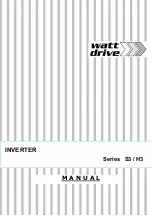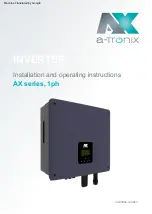
Restrictions on Motor Size
69
Freedom SW-RVC Installation Guide
Battery Bank Sizing Worksheet
The following worksheet is a guide to help you determine your
battery needs. Be generous in estimating the time for which you
will run each of the loads to ensure sufficient battery capacity.
Figure 20 Battery Sizing Worksheet (Blank)
Appliance
(A) Power
Consumption
(Watts)
(B) Operating
Time per Day
(Hours)
Daily watt-hours
needed for this
appliance
(= A × B)
_____
_____W
___hours
_____Wh
_____
_____W
___hours
_____Wh
_____
_____W
___hours
_____Wh
_____
_____W
___hours
_____Wh
_____
_____W
___hours
_____Wh
Total daily watt-hours of AC load
_____Wh
× Number of days between charges
_____
= Total watt-hours of AC load between charges
_____Wh
Battery Ah used between charges (divide by 10)
_____Ah
Recommended Battery Bank Size in Ah (multiply by 2) _____Ah
Restrictions on Motor Size
An appliance may require three to six times its normal running
current in order to start. The Freedom SW-RVC can handle surges
to 6000 watts for five seconds, which translates to a locked-rotor-
amp rating of no more than 50 amps. The locked rotor amp may be
specified on the motor nameplate as “LRA” or “LRI”.
When considering appliances with large motors, follow these
guidelines:
n
Make sure that the motor’s LRA rating is no more than 50
amps. The Freedom SW-RVC may not be able to start a
motor with a higher LRA, and the Freedom SW-RVC will
shut down if the attempt is made.
n
Make sure the battery bank, DC cables and DC fuses are
capable of handling up to 600 amps DC for five seconds. A
weaker circuit may not be able to provide sufficient power to
the Freedom SW-RVC to allow the Freedom SW-RVC to
start up the appliance. Again, if the circuit cannot deliver the
required current, the system may shut down or the fuse
may open.








































